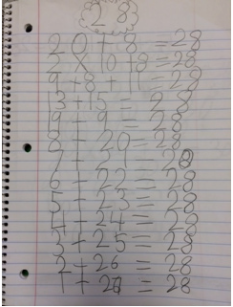O1 – Offer an organized curriculum aligned to standards and outcomes. As a classroom teacher, it is our responsibility to provide instruction that targets the standards students are expected to meet by the completion of each grade level [1]. In order for teachers to be successful in covering all standards throughout the school year, it is important to have an organized plan, or scope and sequence [1].
Figure 1 shows the curriculum map that was created and followed throughout the school year by my internship grade level team [2]. Research has shown that students perform better on assessments when the instruction is aligned to the standards students will be tested on. In order to ensure that our first grade students are able to be successful on assessments of their ability to meet the Common Core State Standards, as a grade level we paced out all units and made sure all standards would be covered over the course of the school year. The evidence in figure 1 demonstrates that I am able to provide instruction that is aligned to the new Common Core State Standards. The curriculum map also demonstrates my ability to plan out instruction in an organized manner across an entire school year [3].
By assisting my grade level team in creating this curriculum map, I learned that there is a great deal of time and planning that goes into creating a scope and sequence for every subject for an entire school year. This is an incredibly important planning tool for the academic year, as following it ensures that all standards will be addressed, and all required curriculum will be covered [4]. This has important implications for student learning, especially with the implementation of the Common Core State Standards. Since the anchor standards build on each other each year, it’s vital that during each grade level teachers provide instruction that targets these anchor standards. By creating a curriculum map that is aligned to Common Core State Standards, teachers can make sure students receive adequate instruction and practice with the standards [5].
Next year, when I teach in my own classroom I plan to map out the curriculum with my new grade level team. I would make sure that this activity is completed before the start of the school year so that from the very first day of school we have a clear picture and plan for making sure curriculum is covered and aligned to the Common Core State Standards [6].


